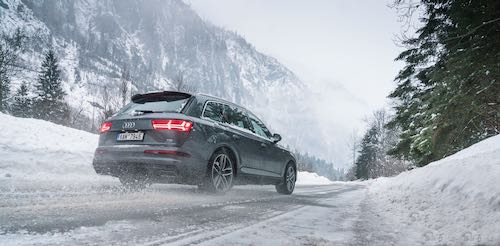This sounds like a fairly simple question, but since you see so many people surprised by the winter weather, they still have their all-season tires mounted on their cars. This proves that it is either difficult to plan or to predict the timing. The time to change is, of course, just before you have winter conditions. Winter conditions don’t only involve snow or ice; it also includes temperatures below 45 degrees Fahrenheit. Most people don’t realize that the winter and snow tires outperform the all-season tires as soon as you have temperatures below 45 degrees Fahrenheit.
All-season tires perform poorly in winter conditions, as they haven’t been designed for these conditions. The rubber compound used for all-season tires will become hard when the temperature drops. When you have a hard tire versus a soft tire, it negatively impacts the friction and thus the grip. This will make it hard to get a sufficient grip in cold temperatures and provide you with a sufficient braking distance. This is the reason why you will need winter tires already as the winter temperatures arrive. Waiting for the snow is dangerous enough, and you will also most likely make miss as it, as the snow tends to come quite unannounced.
It is better to change based on the month when snow usually comes or just on when the temperature. The temperature tends to be more precise and easier to track and monitor. This will make it easier to predict and ensure that you have the winter tires on your car before the snow arrives. Depending on what tires you have, studded tires or non-studded tires can also impact when to change, as the studded tires have some restrictions on when they can earliest be mounted and from what date they have to be taken off and replaced by all-season tires.
If you have studded tires and plan to drive to another state/province, it is important to check the regulations in that state/province. If they don’t allow studded tires, you may risk a hefty fine and be forced to replace them with non-studded tires before you are allowed to continue. If you plan to drive, it is better to change before your trip to non-studded tires, which might be good enough of a tire also where you live. They are not as good as studded on ice, but otherwise just as good.
If you often travel across borders, non-studded tires are an easier option. You can also use winter approved all-weather tires. Both tire options are ok to use in every state and province, so that you don’t have to worry about having wrong tires or getting fines. With non-studded winter tires, you will have to change to all-season tires, once the winter has passed and you are into spring. With all-weather tires, you can continue driving all-year round as they are made for being used both in summer and winter conditions. This makes them very convenient for people traveling between different weather zones.
For more information regarding winter tires, visit: https://www.nokiantires.com/
